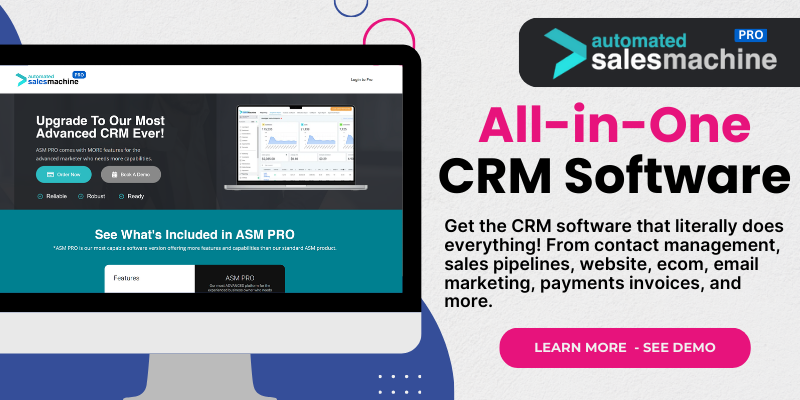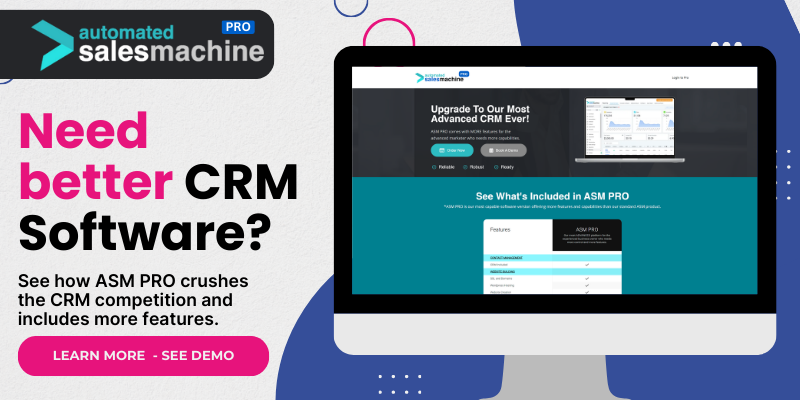Understanding CRM and its Benefits
What is CRM?
Customer Relationship Management (CRM) is essentially a system that helps businesses manage interactions with their customers. I’ve been in the game long enough to know that a good CRM tool can do wonders for your efficiency. With a CRM, you can centralize all your customer data and interactions, which saves a ton of time.
The beauty of CRM lies in its ability to streamline communication. Instead of having client information scattered all over the place, you can get a complete perspective at a glance. This allows me to not only keep track of all conversations but ensures I never miss a follow-up.
Moreover, a good CRM can forecast sales and trends by analyzing the data it collects. It’s like having a crystal ball that tells you how to strategize better and adapt to market needs. Trust me, this insight is priceless!
Benefits of Using CRM Software
One major advantage of using CRM is that it enhances customer service. When you have all your customer interactions noted down, your team can handle inquiries or complaints way better. It gives a personal touch to each communication, which helps to build lasting relationships.
Another perk? Increased productivity! Automating repetitive tasks like data entry or follow-ups frees up time for your team to focus on building relationships instead of just maintaining records. I’ve seen teams transform just by adopting the right CRM tool.
Finally, CRM lets you track performance metrics. By understanding which strategies work best, you can allocate resources more efficiently. Whether it’s determining which campaigns are yielding the best ROI or identifying top-performing sales reps—it’s all there!
Choosing the Right CRM Tool
Now, when it comes to picking a CRM, it’s essential to consider what features are important to your business. Don’t just go for the shiniest option; look for functionalities that match your needs. Some folks love automation, while others prioritize customer support features.
You should also factor in scalability. As your business grows, your CRM should be able to adapt. If you choose a tool that can’t grow with you, you could end up wasting time and money switching down the line. I’ve had to transition CRMs before, and let me tell you—it’s not a fun process!
Lastly, consider the ease of use. The last thing you want is your team spending more time learning software than actually using it. A user-friendly CRM means quicker adoption and greater efficiency!
Scheduling Software: The Unsung Hero
Why Scheduling Matters
Scheduling software is like the unsung hero of productivity. It’s not just about getting meetings on the calendar; it’s about making sure we respect everyone’s time. I can’t tell you how many wasted hours come from poorly-managed schedules!
When you have a reliable scheduling tool, you can quickly see available time slots, reducing the back-and-forth emails. It’s all about streamlining communication and creating more opportunities for collaboration.
Plus, there’s nothing like automated reminders. Life gets busy, and we all know people forget. An effective scheduling tool can send reminders to everyone involved, ensuring that crucial meetings don’t get dropped!
Key Features to Look For
Having a shared calendar view can be a game-changer. You’ll want a tool that allows team members to check each other’s availability. I’ve found that reducing scheduling conflicts adds so much ease to projects.
Integration capabilities are another must-have. Connecting your scheduling software to your existing tools helps everything work seamlessly. No one wants to juggle multiple platforms; integration saves time and hassles!
Also, look out for customization options. Being able to brand your scheduling links adds a professional touch that clients appreciate. It’s important to make your scheduling tools work for your unique business, not the other way around!
How to Implement Scheduling Software
Implementing scheduling software is relatively simple, and you’ll want to start by clearly defining your team’s needs. Discuss what features are most important to you all. This ensures everyone is on the same page and invested in the effectiveness of the tool.
Next, conduct training sessions. Even the best software can be undervalued if your team doesn’t know how to use it. By helping everyone get comfortable, you reduce the tech fear factor and speed up your efficiency.
Finally, encourage feedback post-implementation. It’s crucial to understand what works and what doesn’t. Gathering input helps fine-tune the use of the software to ensure it fits your workflow perfectly!
Integrating CRM with Scheduling Software
The Power of Integration
The integration of CRM and scheduling software creates a powerhouse of efficiency. When both systems work together, you’re able to create a holistic view of your customer interactions and upcoming engagements, which makes customer management seamless.
When I started utilizing both systems in tandem, I noticed that my team could respond to customer inquiries without having to switch back and forth between applications. Everything is in one place, making it easy to prepare for client meetings or follow-ups.
Additionally, this integration helps avoid information silos. Everyone in your organization has access to the same data and schedule, which fosters effective teamwork. We all know how crucial collaboration is, right?
Setting Up Integrated Systems
To get the ball rolling on integrating systems, it’s crucial to choose software that plays well together. Some CRMs have built-in scheduling tools; others offer integrations with popular scheduling apps. I always recommend checking if your selections can connect easily!
Once you’ve got your tools, setting them up requires a little groundwork. You’ll need to map out what data you want to share between the two systems. Think about customer contact information, meeting notes, and follow-up tasks. Laying this foundation makes the integration smoother.
Don’t forget to test the integration before going full-throttle. Run a few trials to ensure everything functions as intended. If you catch any hiccups early, it saves you frustration down the line!
Maximizing Use of Integrated Systems
To truly master the synergy between your CRM and scheduling software, incorporate regular check-ins. Make it part of your team’s routine to review upcoming schedules and associated client information. It keeps everyone aligned and engaged.
Encourage your team to utilize reminders and follow-ups set in your systems. When automated, this ensures important tasks aren’t overlooked, further increasing productivity!
Lastly, celebrate the wins. When you notice increased efficiency or smoother interactions because of your integrated systems, recognize and reward your team for their efforts. It fosters a positive environment and keeps everyone motivated!
Measuring Efficiency Gains
Setting KPIs to Track Success
When you implement new tools, it’s vital to establish Key Performance Indicators (KPIs) to measure success. Some relevant KPIs for CRM and scheduling software might include customer response time or the number of meetings booked.
In my experience, tracking these metrics gives you insight into whether the new systems are positively impacting your operational flow. If you’re seeing improvements, great—keep pushing forward!
If not, you can identify potential issues or areas for additional training. It’s all about learning and improving as a team. Remember, it’s a journey, not a destination!
Regularly Review and Optimize
Continuously review your processes and tools. Regular assessments of your CRM and scheduling systems can help you stay adaptable in a fast-paced environment. Are there features you haven’t fully utilized? Perhaps additional integrations that would streamline even further?
This is where team feedback really shines. Incorporating suggestions from your crew can unveil new ways to optimize efficiency that you may not have considered.
Lastly, don’t neglect personal development! Encourage team members to partake in workshops or trainings related to CRM and scheduling software. Building skills collectively can lead to impressive efficiency gains.
Celebrating the Gains
Recognizing team successes goes a long way in promoting a culture of efficiency. If you notice marked improvements due to the new systems, take a moment to toast to these wins as a team!
Creating a recognition system helps to keep morale high and encourages continued use of the tools at hand. You want everyone to feel like a part of the success story.
Also, sharing those success stories with the entire organization can promote wider adoption of these systems. When others see results, they will likely be more inclined to embrace the change!
FAQs
- What is CRM?
CRM, or Customer Relationship Management, is a system that helps businesses manage their interactions with customers, centralizing data and improving efficiency. - Why should I consider using scheduling software?
Scheduling software helps streamline the process of managing appointments and meetings, minimizing conflicts and improving productivity. - How can CRM and scheduling software work together?
When integrated, CRM and scheduling software can provide a comprehensive view of customer interactions and upcoming engagements, enhancing collaboration and efficiency. - What key performance indicators should I track?
Track metrics such as customer response times, the number of meetings booked, and overall team productivity to measure the success of your CRM and scheduling tools. - How can I encourage my team to adopt these tools?
Involve your team in the selection process, provide thorough training, and encourage feedback for continuous improvement to foster a positive adoption experience.

